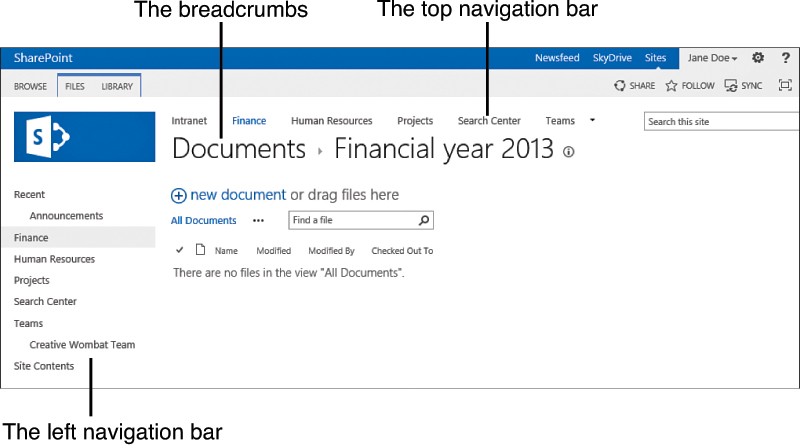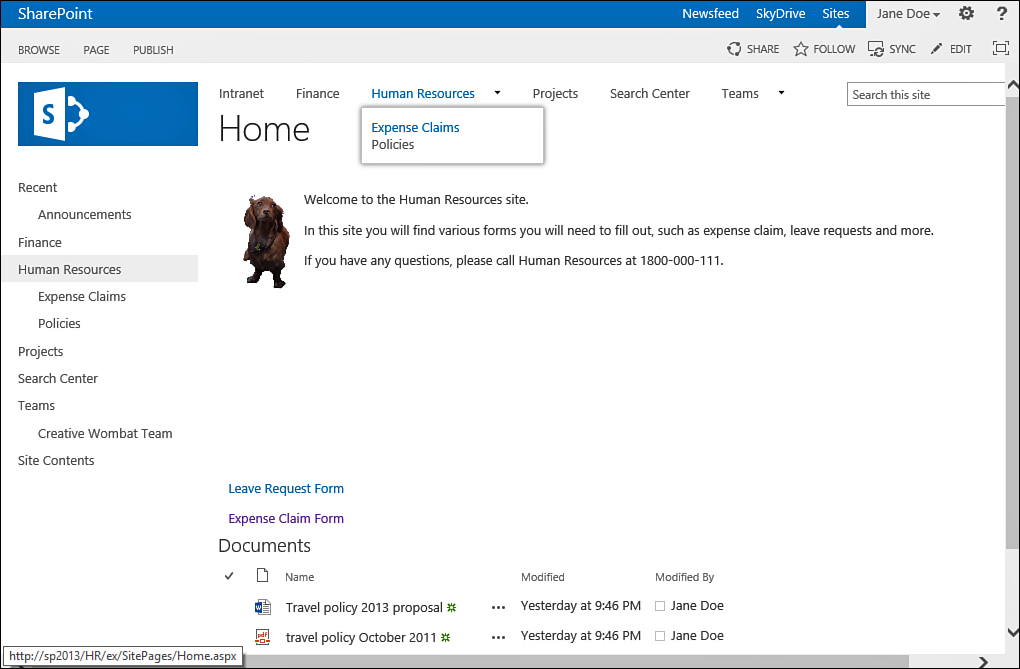Scenario/Problem:
Information is the focus of a SharePoint site. Each site might contain
different information in different places. You need to know how to
navigate a site to find the information you need.
Solution:
This section explains the different mechanisms that help you to
navigate through a site. Most sites use the navigation ribbon (also
known as the Browse ribbon) to show navigation controls on the top of
the page—including a top navigation bar and the breadcrumbs. Often
there is also a side navigation bar that shows more navigation options
on the left of the page.
A site manager can change the navigation bars
to show different links to different parts of the site. The navigation
bars should be your primary source of information about what you can
view in the site.
Figure 1
shows an example of a site that shows both navigation bars, along with
the breadcrumbs. In this figure, the top navigation bar shows links to
subsites that exist under the current site.

FIGURE 1 The three navigational aids: the breadcrumbs, the top navigation bar, and the left navigation bar.
Sometimes the navigation in a site is
configured to display the pages and/or the subsites of the subsites,
resulting in a hierarchy of sites that is displayed as fly-out menus.
These menus show the subsites for a site when you hover the mouse over
the link for that site, as shown in Figure 2.

FIGURE 2 The top navigation bar, showing fly-out menus for the subsites under the Human Resources site.
To navigate to a subsite,
you can click on the links to that subsite in either navigation bar.
Depending on how your administrator set up the navigation, the subsites
might show the same top navigation bar but a different left navigation
bar—one that is specific to the current site. However, the
administrator can choose that a subsite will display the same left
navigation as the top site, making it look as if you are still in the
same site, except for the fact that the current site that you are on is
highlighted in the top navigation bar.